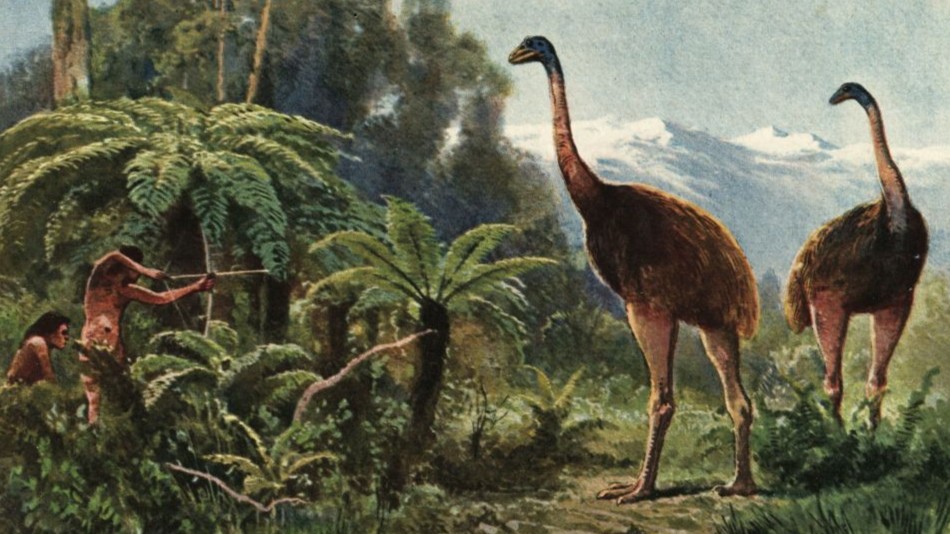Science news this week: A unique new blood type and ‘spiderwebs’ on Mars

Did you notice the days feeling shorter this week? Probably not. But our planet has actually been spinning ever so slightly faster, due to changes in the position of the moon relative to Earth’s poles. And the shortest days are yet to come.
On average, a day on Earth is about 86,400 seconds long, or 24 hours. But this can vary due to a number of things, including the positions of the sun and moon and changes to Earth’s magnetic field.
On July 9, July 22 and Aug. 5, the moon will be at its farthest distance from Earth’s equator, which changes the impact of its gravitational pull on the planet’s axis. With the moon closer to the poles, Earth’s spin speeds up, making our day shorter than usual — but only by about 1.5 milliseconds.
Much more noticeable this week were the devastating flash floods in Texas, New Mexico, North Carolina and Illinois, which have left at least 130 dead.
Moa ‘de-extinction’

After years of analysis and observation, scientists have identified a new blood group, called Gwada negative, that has so far only been identified in only one person on the planet.
After making headlines for claiming to have brought dire wolves back from extinction earlier this year, biotechnology company Colossal Biosciences has sparked a new wave of controversy with its latest “de-extinction” project: bringing back the giant moa (Dinornis robustus.)
The giant moa was a large flightless bird native to New Zealand that is thought to have gone extinct due to hunting by humans roughly 600 years ago. The company claims that “resurrecting” these giant birds could bring benefits to endangered animals alive today, but the announcement has drawn criticism from many others in the scientific community.
Discover more animal news
—Chimps develop fashion trend by shoving grass in their ears — and in their butts
—’Ash-winged dawn goddess’ is oldest pterosaur ever discovered in North America — and it was small enough to sit ‘on your shoulder’
—’Alpha male’ primates are rare, with females about as likely to dominate the opposite sex, study finds
Life’s little mysteries

On average, human males tend to be about 5 inches (13 centimeters) taller than females. However, this size difference isn’t consistent across the animal kingdom, with females often outsizing males. So, why are human men typically bigger than women?
—If you enjoyed this, sign up for our Life’s Little Mysteries newsletter
Earth’s poles shifting

Since 1835, thousands of dams have been built around the world to control water supplies and, in some cases, generate electricity. Some of these larger dams hold so much water that they have actually redistributed mass around the world.
Now, scientists have found that this mass redistribution has shifted the position of Earth’s crust relative to its mantle and, in turn, affected the position of our planet’s poles.
Discover more planet Earth news
—Melting glaciers could trigger volcanic eruptions around the globe, study finds
—Scientists discover that mysterious giant structures beneath the North Sea seemingly defy what we know about geology
—Mercury’s ‘missing’ meteorites may have finally been found on Earth
Also in science news this week
—Massive blocks from the Lighthouse of Alexandria, an ancient wonder, hauled up from the Mediterranean
—Scientists burned, poked and sliced their way through new robotic skin that can ‘feel everything’
—Scientists discover Burmese pythons have never-before-seen cells that help them digest entire skeletons
—Stunning facial reconstructions of ‘hobbit,’ Neanderthal and Homo erectus bring human relatives to life
Beyond the headlines

Between March and May, as temperatures climbed above 95 degrees Fahrenheit (35 degrees Celsius) in parts of India, community health care workers reported an increase in the number of patients coming in with persistent confusion, weakness and seizures. Outdoor workers were collapsing, with new cases reported every day.
But the uptick was not the result of a new virus or bacterial infection — rather, these incidents were caused by a dangerous electrolyte imbalance.
Hyponatremia is a condition in which the sodium level in the blood falls too low and, if left untreated, can lead to brain swelling, seizures, coma, muscle breakdown and even death. Cases of hyponatremia often increase in the summer months. Now, experts are warning that warming global temperatures could cause incidences of hyponatremia to skyrocket.
Something for the weekend
If you’re looking for something a little longer to read over the weekend, here are some of the best long reads, book excerpts and interviews published this week.
—8-year-old with rare, fatal disease shows dramatic improvement on experimental treatment (Analysis)
—‘The first author was a woman. She should be in the kitchen, not writing papers’: Bias in STEM publishing still punishes women (Book Extract)
—What are dwarf planets — and how many are there? (Query)
Science in pictures

This week, the James Webb Space Telescope (JWST) revealed its latest cosmic curiosity after it spotted a strange owl-shaped object lurking 11 billion light-years from Earth.
The avian formation is thought to have taken shape due to the extremely unusual collision of two rare ring galaxies, which are formed when smaller galaxies smash straight through the middle of larger ones, kicking out the larger galaxy’s stars and gas around a central core to create a ring-like shape.
Want more science news? Follow our Live Science WhatsApp Channel for the latest discoveries as they happen. It’s the best way to get our expert reporting on the go, but if you don’t use WhatsApp, we’re also on Facebook, X (formerly Twitter), Flipboard, Instagram, TikTok, Bluesky and LinkedIn.


